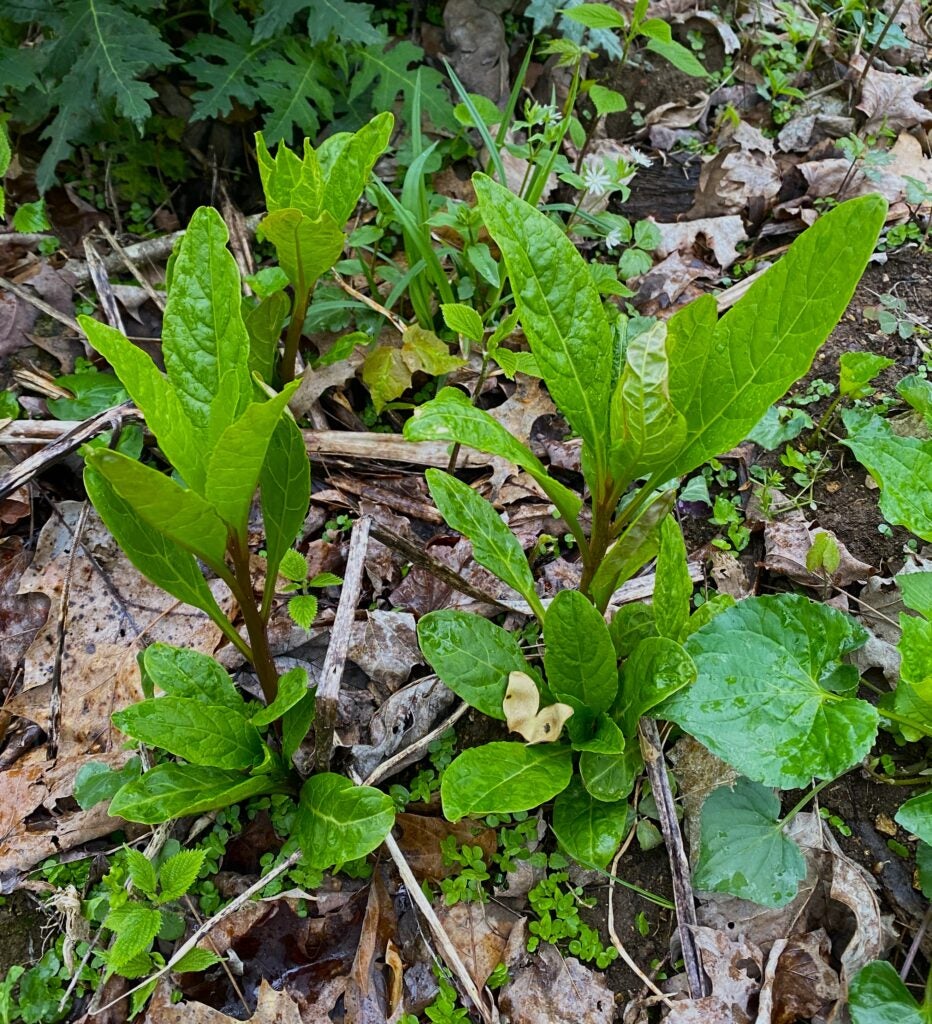Roark: Poke salad, a mountain tradition
Published 2:15 pm Monday, April 29, 2024

- A mountain tradition is to eat newly sprouted Poke stems, which must be picked and prepared properly. (Photo by Steve Roark)
By Steve Roark
Columnist
A family tradition my mom kept was to seek out young poke sprouts in the spring and make poke salad, a king of cooked greens. Back before grocery store chains and refrigeration, country folk came out of winter craving a fresh green to eat, and poke was one of the newly sprouted plants that were sought out, along with “creesies” or spring crest. The lack of fresh green vegetables during the winter months sometimes caused a vitamin deficiency, and eating poke fit the bill as a spring tonic due to its very high vitamin A and C content.
Poke, also called pokeweed or pokeberry, is considered a weed that comes up in waste places that are not regularly mown. It is a perennial plant that grows to eight feet tall, and has fairly large, spear shaped leaves with smooth edges. The stem is a purplish red color near the base and is hollow. The outer branches are green with a reddish tinge. There are clusters of white flowers in the spring that later produce bunches of dark purple berries in the fall.
Poke is a plant of contradiction, being listed as both edible and poisonous. The older stems, roots, and berries are considered toxic and should not be consumed. The very young and tender new shoots are considered the only edible part. These should be less than six inches long and have little if any red color on the stem. They will have young immature leaves with them. To harvest I just grab the end of the shoot and snap it off, coming away with maybe three to five inches of the end growth. To prepare them my mom would boil them for 30 minutes in two changes of water. She liked to flavor boiled poke by frying it in bacon grease and serving it as a side vegetable. Sauteing the boiled greens in butter is my preferred way to prepare them. If you’ve never eaten poke before, only eat a small portion in case of food allergies. And of course proper identification is a must.
Poke is noted as having medicinal qualities as well. The high vitamin content of the cooked greens was used to treat scurvy, and the berries and roots were used as a poultice to treat sores, rheumatism, and bruises. Another human use was to use the berries as a dye. The berries are very popular with songbirds, fox, and opossum. They are especially relished by the mourning dove, which have been known to become intoxicated by eating fermented berries.






